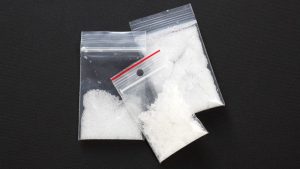
Research chemicals, also known as designer drugs or experimental substances, represent a broad category of psychoactive compounds designed to mimic the effects of controlled substances while often remaining legally ambiguous. These chemicals are primarily used in scientific research, but they have also gained popularity among enthusiasts exploring altered states of consciousness.
This guide will explore the major categories of research chemicals, their effects, potential risks, and legal considerations. Whether you’re a researcher, a curious individual, or someone looking to understand this complex field, this article provides an in-depth look into the world of experimental substances.
1. Understanding Research Chemicals
Research chemicals are synthetic substances created to study their pharmacological properties. Unlike traditional drugs, many of these compounds have limited human consumption data, making their effects unpredictable. They are often marketed as “not for human consumption” to bypass legal restrictions.
The appeal of research chemicals lies in their novelty and the fact that they may not yet be classified as illegal substances in many jurisdictions. However, this also means they come with significant risks, including unknown toxicity, unpredictable side effects, and potential long-term harm.
2. Major Categories of Research Chemicals
Research chemicals can be classified into several categories based on their chemical structure and effects. Below, we explore the most prominent groups.
2.1 Arylcyclohexylamines (PCP and Ketamine Analogs)
Arylcyclohexylamines are dissociative compounds that produce effects similar to PCP and ketamine. These substances alter perception, induce hallucinations, and create a sense of detachment from reality.
Common examples include:
-
3-MeO-PCP – A potent dissociative with stimulating properties.
-
DXM (Dextromethorphan) – Found in cough medicine but used recreationally in high doses.
These substances can cause severe dissociation, confusion, and even dangerous behavior due to their anesthetic properties.
2.2 Benzodiazepines (Designer Benzos)
Benzodiazepines are central nervous system depressants primarily used for anxiety and insomnia. Designer benzos, such as Etizolam and Clonazolam, are research chemical variants that mimic traditional medications like Xanax or Valium but often with higher potency and addiction potential.
Risks include:
-
Severe dependence and withdrawal symptoms.
-
Blackouts and memory loss.
-
Overdose when mixed with other depressants like alcohol or opioids.
2.3 Benzofurans (Stimulant and Entactogen Compounds)
Benzofurans are stimulant-like substances that produce effects similar to MDMA. Compounds like 5-APB and 6-APB are known for their euphoric and empathogenic properties.
Effects may include:
-
Increased sociability and energy.
-
Enhanced sensory perception.
-
Potential cardiovascular strain due to stimulant effects.
2.4 Synthetic Cannabinoids (K2/Spice Alternatives)
Synthetic cannabinoids are lab-made chemicals that mimic THC, the active compound in cannabis. However, these substances are often far more potent and unpredictable.
Products like K2 are infamous for causing severe side effects, including:
-
Psychosis and extreme paranoia.
-
Seizures and cardiovascular issues.
-
Dependency and withdrawal symptoms.
Unlike natural cannabis, synthetic cannabinoids have a much higher risk of toxicity.
2.5 Cathinones (Bath Salts and Stimulant Analogs)
Cathinones are synthetic stimulants related to amphetamines and cocaine. Often sold as “bath salts,” these substances can be extremely dangerous.
Common examples:
-
Mephedrone (4-MMC) – Known for intense euphoria but severe crashes.
-
Alpha-PVP (Flakka) – Associated with violent behavior and psychosis.
Risks include:
-
Extreme agitation and paranoia.
-
Hyperthermia (dangerously high body temperature).
-
Addiction and severe withdrawal.
2.6 Dissociatives (NMDA Receptor Antagonists)
Dissociatives are a class of drugs that distort perception and create a sense of detachment from the self. This category includes ketamine analogs and PCP-like substances.
Effects may include:
-
Hallucinations and out-of-body experiences.
-
Numbness and impaired motor function.
-
Risk of accidental injury due to disorientation.
2.7 Phenethylamines (MDMA and Amphetamine-Like Compounds)
Phenethylamines include a wide range of stimulants and psychedelics. Some, like 2C-B, are known for their hallucinogenic properties, while others, like 4-FA, act as stimulants.
Effects vary but may include:
-
Visual and auditory hallucinations.
-
Increased energy and euphoria.
-
Risk of serotonin syndrome when combined with other drugs.
2.8 Research Chemicals in Pellet Form
For ease of use, some research chemicals are pressed into pellet form. These are often sold as “legal alternatives” to controlled substances but carry the same risks as powdered or liquid forms.
2.9 Tryptamines (Psychedelic Compounds)
Tryptamines are a class of psychedelics that include DMT, psilocybin (magic mushrooms), and their synthetic analogs. Examples include 4-AcO-DMT (a psilocybin analog) and 5-MeO-DMT (a potent short-acting psychedelic).
Effects include:
-
Intense visual and auditory hallucinations.
-
Altered sense of time and self.
-
Potential for overwhelming experiences (“bad trips”).
3. Risks and Harm Reduction Strategies
Research chemicals pose significant risks due to their unregulated nature. Here are some harm reduction tips:
-
Start with a low dose – Many research chemicals are active in microgram amounts.
-
Use reagent testing kits – To verify substance identity and avoid dangerous adulterants.
-
Avoid mixing substances – Combining research chemicals with alcohol or other drugs increases overdose risk.
-
Have a trip sitter – Especially when trying psychedelics or dissociatives.
-
Research legal status – Laws vary by country, and some substances may lead to legal consequences.
4. Legal Status of Research Chemicals
The legality of research chemicals varies widely. Many governments have implemented analog acts, which ban substances structurally similar to controlled drugs. However, new compounds frequently emerge, creating a cat-and-mouse game with regulators.
Before purchasing or possessing any research chemical, check local laws to avoid legal repercussions.
5. Conclusion
Research chemicals offer a fascinating but dangerous frontier in psychoactive substances. While they provide valuable insights for scientific study, their recreational use carries serious risks, including addiction, psychosis, and even fatal overdose.
If you choose to explore these substances, always prioritize safety, conduct thorough research, and stay informed about legal changes. For those interested in specific categories, explore the links provided throughout this guide to learn more about each class of research chemicals.
